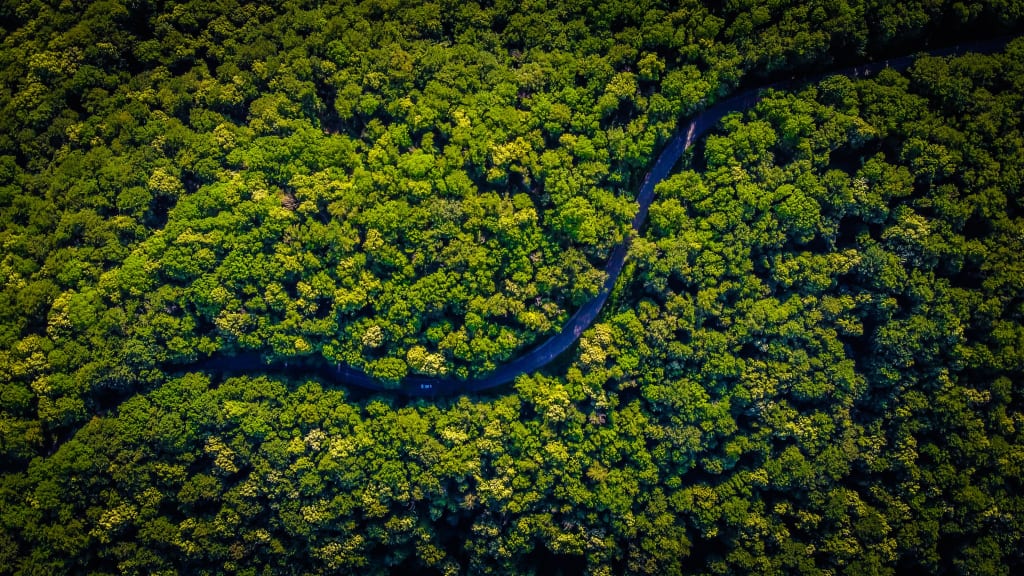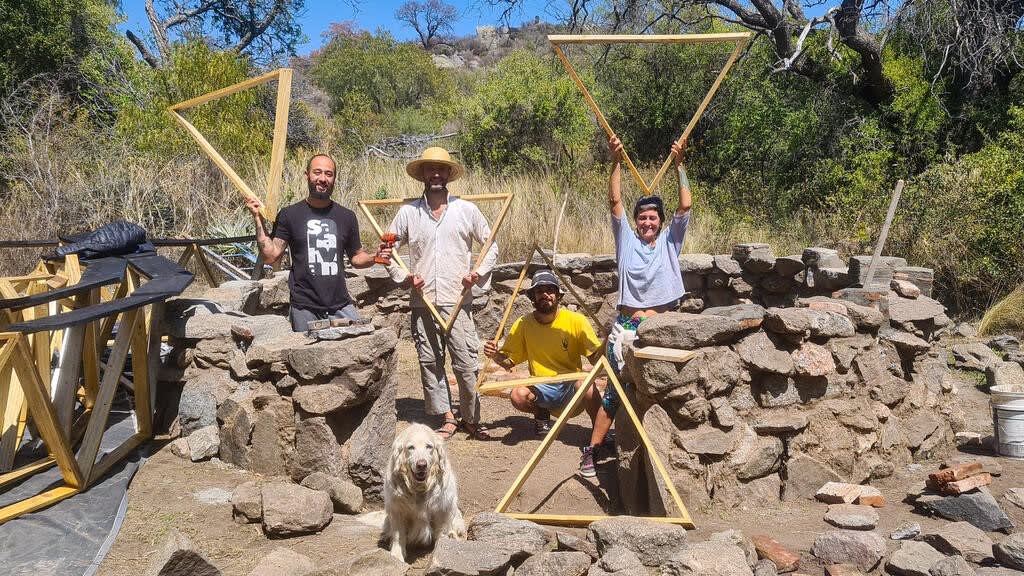What is green travel and how can you travel sustainably?
As travel continues to grow, our awareness of what green travel is and how to travel in an environmentally friendly way also needs to increase. We need to change the way we travel NOW!
10min

As technology and infrastructure improve, the world seems to be getting smaller. The ability to travel the world is becoming accessible to more and more people as the cost of getting to another country is getting cheaper.
It’s no wonder that the travel industry is the second-fastest growing industry in the world. Looking at internet searches will give you a good idea of how much travel is growing. During the final quarter of 2022, 35% of all searches were for travel in 2023. That’s a 55% increase from 2021!
And I can only see it continuing to grow, as long as another pandemic doesn’t come our way!
Traveling is great, and the more people get to see different parts of the world, hopefully, the more tolerant and educated we become. But there are downsides to more travel, one of them being the impact that it has on the environment.
According to the World Travel & Tourism Council, 8-10% of global CO2 emissions are caused by the travel and tourism sector, with the majority of these emissions being created by the travel to the destination. And sadly, these numbers will only get bigger as more people begin to travel unless we consciously do something about it.
That’s where green travel comes in.
What is green travel?
Green travel has many different names — sustainable travel, ecotourism, conscious travel — but all of them essentially mean the same thing or at least follow the same narrative.
Green travel focuses on minimizing the impact on the local environment and communities. It’s about choosing ways to travel that are sustainable and environmentally friendly. Whether it’s reducing or offsetting your carbon emissions, reducing waste, staying in eco-friendly accommodations, or shopping locally and supporting communities.
There are plenty of ways to travel in a green way, and that’s what we’re going to be exploring in this article.
Watch out for greenwashing
This needs to be covered pretty early on as you don’t want to try your best to travel sustainably and then realize that you’ve actually been greenwashed.
What is greenwashing?
Greenwashing is when a company tries to appear to be environmentally friendly and claims that its practices are sustainable, when in fact this isn’t true. They may try to emphasize sustainable aspects of their company to overshadow their bad practices that are having a devastating effect on the environment.
Demand for environmentally friendly products and operations is growing as more people want to do their part in looking after our planet. A lot of companies have seen this as an opportunity to boost their profits and attract new customers by advertising that they’re operating in an environmentally friendly way.
Examples of greenwashing
A quick Google search will reveal plenty of examples of greenwashing from brands that we interact with on a daily basis. Here are two well-known companies that thought they’d give greenwashing a go:
In 2020, Ryanair announced that they were Europe’s ‘lowest emissions airline’. I’m not sure how they reached this conclusion, but the Advertising Standards Authority certainly didn’t agree with this claim and quickly banned all of the ads promoting this.
McDonald’s is guilty too. In 2019, they introduced paper straws. Round of applause for Mcdonald's, right? No. Although they were trying to address the problem of plastic pollution, they just shifted the problem instead. The paper straws weren’t recyclable, and more trees were having to be cut down to make them!
How to spot greenwashing?
In an ideal world, we shouldn’t have to keep an eye out for greenwashing. Companies would be honest and actually try to look after our planet. Unfortunately, that’s not the world that we live in.
And greenwashing isn’t always easy to see. You often have to go out of your way to do your own research to verify the company's claims. You’ll have to look at third-party research and reports, and check the fine print of the company.
All we can do is try our best, and hopefully, the huge corporations start to adopt this attitude too.
How to travel sustainably: eco-friendly vacations
At times, trying to save our planet can feel hopeless. We often hear people saying "But I’m only one person. My actions aren’t going to make a difference". If everyone adopts this way of thinking then of course nothing is going to change!
If everyone starts to act more sustainably, especially when it comes to travel, then as a collective it will make a difference.
And green travel is easier than you think. There are plenty of ways and changes that you can make to your travels that can make them more sustainable:
Slow travel
Traveling slowly has so many benefits, but is often tossed to the side as travelers want to tick off as many places as possible. Whilst this is tempting, you end up only touching the surface of that country, missing out on truly learning about the culture and people of that place.
When I travel slowly, my connections with places and people are so much deeper and more memorable. Try it, and I’m sure you’ll prefer it to being in a new place every few days.
Taking your time will also save you money. You can often negotiate better deals on accommodation if you’re staying for longer. You’re not constantly splashing the cash on transportation and you’ll probably cook more rather than eat out.
It’s also better for the environment. Instead of hopping on a flight every two weeks, you’ll be in the same place for longer.
Stay close to home
This is potentially one of the harder changes to make as the urge to see the world is so strong within many of us.
But staying close to home isn’t as bad as it sounds. Every country has something spectacular to offer, we just often overlook them if they’re in our own country. New and foreign things always seem more exciting, but take some time to look at things to do in your own country.
As I mentioned before, most of the carbon emissions from travel come from getting to the destination itself. By staying in your own country you’re removing this negative impact on the environment. If you live in Europe, maybe you can visit some of your neighboring countries and get there by train.
As well as being a more sustainable way to travel, it can save you money too. Your transportation costs will be significantly lower. No visas to think about either.
Choose sustainable destinations

Some countries are doing more than others to make themselves a sustainable destination to visit.
For example, Bhutan is one of the best ecotourism destinations in the world. Since 1991, Bhutan has been charging visitors a daily Sustainable Development Fee. The money is used on projects such as offsetting Bhutan’s carbon footprint from tourism, supporting community education, organic farming, and upskilling workers in the tourism industry.
The tourism fee is pretty expensive, at $200/day, but there’s a price to pay if we want to protect our planet.
A more affordable ecotourism destination is Slovenia which has made it easier for you to choose sustainable options. If an accommodation or tourism service has a Slovenia Green Label, you know that you’re helping to preserve local traditions and protect the environment.
It’s important to research a destination beforehand to see what they're doing to be more sustainable and protect their environment.
Continue reading about ecotourism and the top 10 ecotourism destinations.
Choose a place that will benefit from your visit

Some countries really don’t need any more visitors. A growing number of countries are now struggling with overtourism — when too many people visit the same destination, often leaving a negative impact on the environment and local communities.
You can probably already name a few places off the top of your head after seeing pictures of huge crowds fighting to witness the same tourist attraction. Some well-known examples include Rome, Bali, Barcelona, and the Yucatan peninsula in Mexico.
Sure, there’s a reason why everyone wants to visit these places. They’re incredible and popular for a reason. But there are plenty of other lesser-known spots that you could visit instead.
Want to learn more about overtourism? Here’s what it is and how you can avoid it.
Think about what you pack
Green travel starts before you even pack your bags to leave. What you bring with you in your backpack will have an impact on the place that you’re visiting.
The first sustainable swap that everyone should be making is to reef-safe suncream. These suncreams don't contain chemicals that harm the coral and reef when you go swimming in the sea. Hawaiian tropics has a great reef-safe suncream that I highly recommend.
Another easy action is to travel with a reusable water bottle. In some countries you'll be able to drink tap water and can directly fill up your water bottle, avoiding having to buy bottles of water.
Bring a tote bag to take with you whenever you go shopping so that you don’t have to take a plastic bag. Or if you don’t have another bag, get a plastic bag one time and keep on reusing it.
Our coastlines are being ruined by plastic, so try to avoid using and buying it wherever you can.
This minimalist packing list should help you to pack sustainably the next time you travel.
Choose green accommodation
According to research carried out by Booking.com, 78% of travellers say they intend to stay in a more sustainable property in the coming year – yet 29% don’t know how to find sustainable travel options.
With some accommodations, it’s clear to see that they’re operating in an eco-friendly way. They may have solar panels, reuse their water, employ local people and buy from the local community. With others, it may not be as obvious, or it could just be greenwashing.
Spend some time looking at the accommodation's website, and you could even message them if you have any questions about their sustainable practices.
Booking.com have also made it easier to find sustainable accommodation by introducing its ‘Travel Sustainable’ badge. It’s an independently validated recognition program that now appears as a small icon on sustainable places to stay. They do all the work for you so it’s easier to make green decisions.
Booking is offering 2% of Cashback to backpackers who create a profile on Worldpackers. Subscribing to Worldpackers is free, and you only need to subscribe to a plan when you decide to have your first experience through the platform. If you choose the Pack Plan, you will guarantee 4% of Cashback on Booking.com, in addition to other advantages.
*The Cashback benefit is limited to $200 per booking, and you must log in to your Booking.com account to gain access to Cashback.
Choose sustainable modes of transportation

This is often the first swap that people make to travel more sustainably. Instead of taking flights, which produce a lot of CO2, try to take public transport.
Sometimes taking a flight doesn’t even work out that much quicker, and it’s normally a lot more expensive. By the time you account for the time it takes to get to the airport and the wait time, it can sometimes take just as long as taking a bus or a train.
You can also decide to visit countries that are in the same area to avoid taking flights. For example, you could travel all the way from the USA to Argentina without having to take a flight. There are buses, boats and trains that can take you across the borders. Same with Europe and Southeast Asia.
Again, this is also a much cheaper way to travel than flying to the other side of the world to visit your next country.
Eat, stay, and shop locally
Make the conscious decision to stay in local homestays, eat at local restaurants and buy from shops that are run by people in the community.
Sometimes it might be easier to eat at a chain restaurant or stay at a well-known hotel, but this often means that the local economy isn’t benefiting from your money as much. Instead, it’s making rich people richer.
It’s better for the local economy, but it is also likely to be better for you. If you’re visiting a foreign country, it’s likely that you want to immerse yourself in the local culture as much as possible. Staying, eating, and buying locally is often the best way to do this. Plus, the local restaurants are more often than not the best places to eat!
If you’re a solo traveler, check out these 12 tips for responsible travel.
Give back by volunteering
Green travel isn’t just about reducing things, it can also be about giving back and leaving a positive impact on the communities that you’re visiting.
One way to do this is by volunteering. You can contribute your skills and donate your time to people that will benefit from it.
Volunteering also allows you to spend more time in a place, immersing yourself and really getting to know the culture. There are so many benefits of this, one of them being that you become a better-educated individual who will also be able to teach others about different cultures and ways of living.
Here’s how you can be an environmental volunteer.
How to find volunteering opportunities?

Worldpackers is a fantastic place to find volunteering opportunities that have a positive environmental and social impact. You can use their filters to find exactly what kind of sustainable volunteering you’re looking for.
You can filter by ‘eco programs’ which will show you places where you can learn permaculture, farming, or contribute to an ecovillage.
If people are more your thing, use the 'social impact' filter. This will show you volunteer opportunities in NGOs, schools, and social projects.
Here are some examples of sustainable volunteering opportunities to spark your imagination:
- Teach languages in Uganda
- Work with kids to help them understand animal care in Cape Verde
- Lend a helping hand on a farm in Brazil
- Contribute your handyman skills in the US
- Help this animal shelter in Tenerife
Check out plenty more environmental volunteer opportunities on Worldpackers.
The first step of green travel is being aware of what it is and why we should be trying to travel more sustainably. The second step is changing our mindsets and consciously making decisions that have less of an impact on the environment.
Traveling isn’t going to slow down anytime soon, so we need to make sure we find a way to do it in a way that isn’t going to destroy our planet. And that needs to start right now!
Want to learn more about planning your trip? By subscribing to the WP pack plan you have unlimited access to +120 courses at Worldpackers Academy, the travel school made by travelers!












سفيان
Apr 20, 2023
Travel
Morocco
May 04, 2023
We all need to think twice about how we live and how we survive and how we travel, we are all responsible during our vacations in any country, therefore we support every sustainable travel available. Travel green in Morocco with https://moroccogreentours.com/
Yassine
Jul 27, 2023
Thank you
Yassine
Jul 27, 2023
Travaille